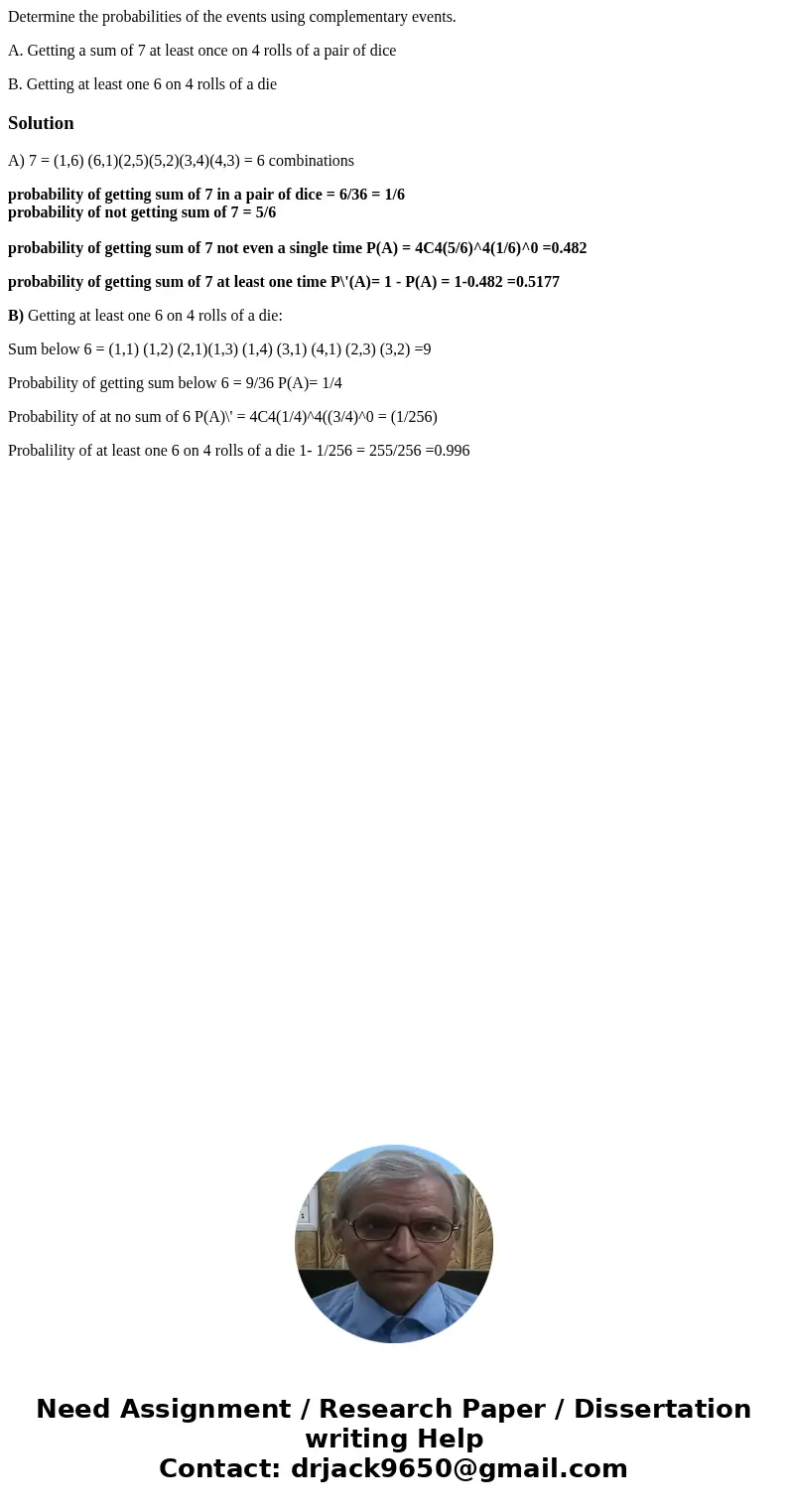Determine the probabilities of the events using complementar
Determine the probabilities of the events using complementary events.
A. Getting a sum of 7 at least once on 4 rolls of a pair of dice
B. Getting at least one 6 on 4 rolls of a die
Solution
A) 7 = (1,6) (6,1)(2,5)(5,2)(3,4)(4,3) = 6 combinations
probability of getting sum of 7 in a pair of dice = 6/36 = 1/6
probability of not getting sum of 7 = 5/6
probability of getting sum of 7 not even a single time P(A) = 4C4(5/6)^4(1/6)^0 =0.482
probability of getting sum of 7 at least one time P\'(A)= 1 - P(A) = 1-0.482 =0.5177
B) Getting at least one 6 on 4 rolls of a die:
Sum below 6 = (1,1) (1,2) (2,1)(1,3) (1,4) (3,1) (4,1) (2,3) (3,2) =9
Probability of getting sum below 6 = 9/36 P(A)= 1/4
Probability of at no sum of 6 P(A)\' = 4C4(1/4)^4((3/4)^0 = (1/256)
Probalility of at least one 6 on 4 rolls of a die 1- 1/256 = 255/256 =0.996

 Homework Sourse
Homework Sourse